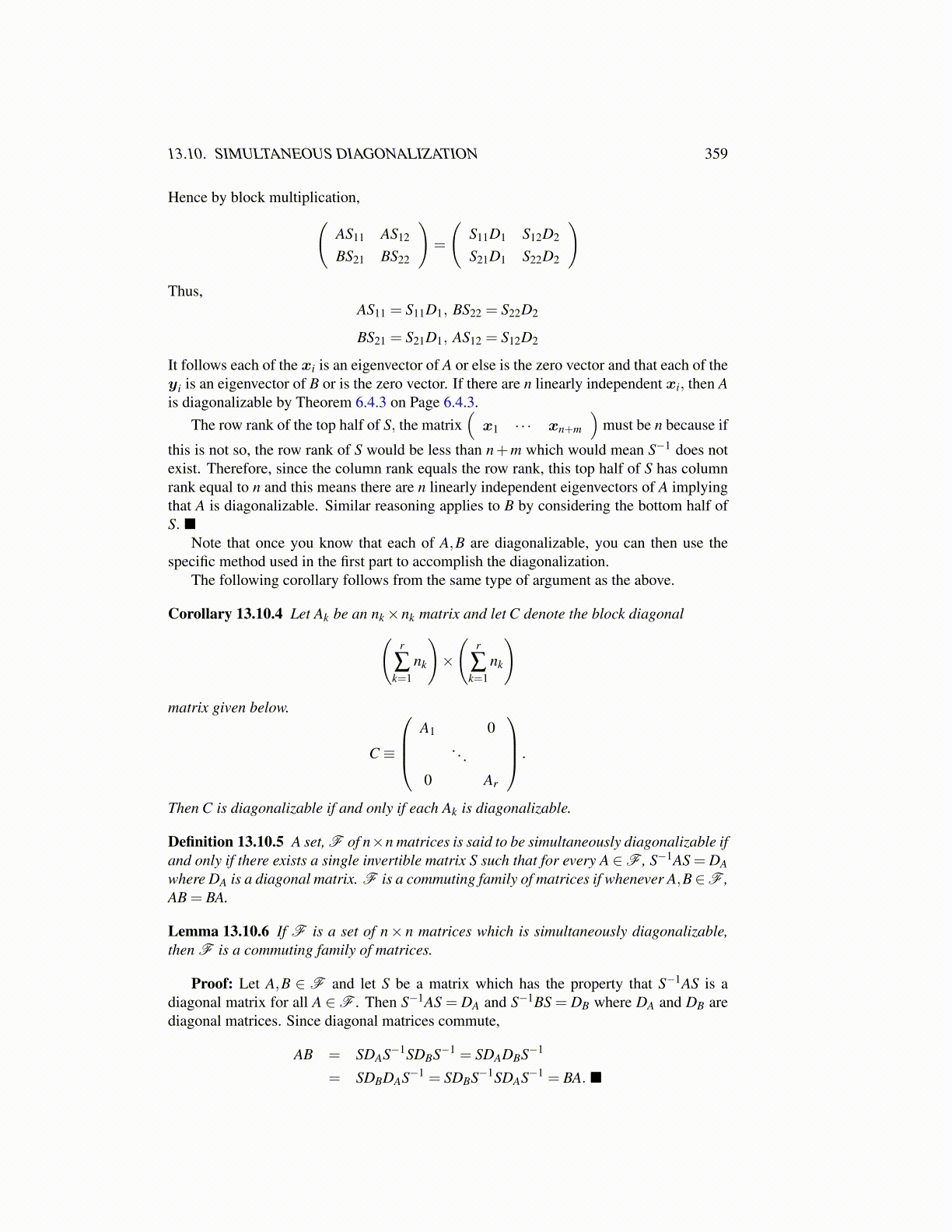
13.10. SIMULTANEOUS DIAGONALIZATION 359
Hence by block multiplication,(AS11 AS12
BS21 BS22
)=
(S11D1 S12D2
S21D1 S22D2
)
Thus,AS11 = S11D1, BS22 = S22D2
BS21 = S21D1, AS12 = S12D2
It follows each of the xi is an eigenvector of A or else is the zero vector and that each of theyi is an eigenvector of B or is the zero vector. If there are n linearly independent xi, then Ais diagonalizable by Theorem 6.4.3 on Page 6.4.3.
The row rank of the top half of S, the matrix(
x1 · · · xn+m
)must be n because if
this is not so, the row rank of S would be less than n+m which would mean S−1 does notexist. Therefore, since the column rank equals the row rank, this top half of S has columnrank equal to n and this means there are n linearly independent eigenvectors of A implyingthat A is diagonalizable. Similar reasoning applies to B by considering the bottom half ofS. ■
Note that once you know that each of A,B are diagonalizable, you can then use thespecific method used in the first part to accomplish the diagonalization.
The following corollary follows from the same type of argument as the above.
Corollary 13.10.4 Let Ak be an nk×nk matrix and let C denote the block diagonal(r
∑k=1
nk
)×
(r
∑k=1
nk
)
matrix given below.
C ≡
A1 0
. . .
0 Ar
.
Then C is diagonalizable if and only if each Ak is diagonalizable.
Definition 13.10.5 A set, F of n×n matrices is said to be simultaneously diagonalizable ifand only if there exists a single invertible matrix S such that for every A ∈F , S−1AS = DAwhere DA is a diagonal matrix. F is a commuting family of matrices if whenever A,B∈F ,AB = BA.
Lemma 13.10.6 If F is a set of n× n matrices which is simultaneously diagonalizable,then F is a commuting family of matrices.
Proof: Let A,B ∈ F and let S be a matrix which has the property that S−1AS is adiagonal matrix for all A ∈F . Then S−1AS = DA and S−1BS = DB where DA and DB arediagonal matrices. Since diagonal matrices commute,
AB = SDAS−1SDBS−1 = SDADBS−1
= SDBDAS−1 = SDBS−1SDAS−1 = BA. ■